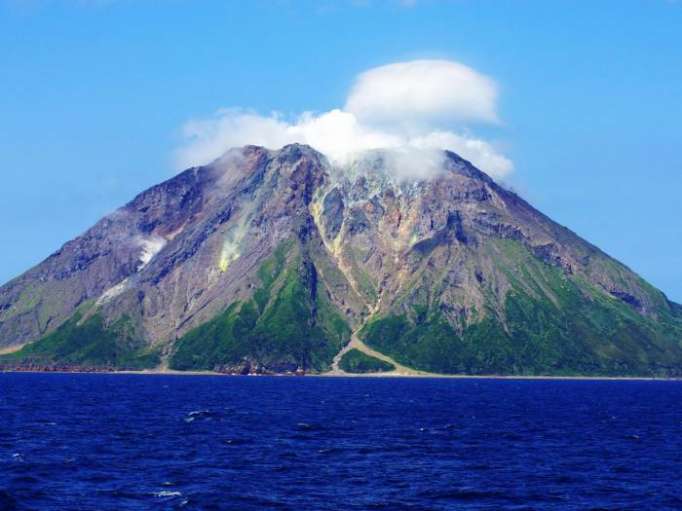The structure, which appears to be growing in size, was formed following the Akahoya supereruption that took place at the site 7300 years ago, leaving a 12-mile hollow called Kikai Caldera.
That eruption is thought to have wiped out the ancient Jomon culture that inhabited the southern Japanese island of Kyushu at the time.
Supereruptions are rare but devastating events that can have global impacts due to volcanic ash and chemicals obscuring the Sun and triggering a “volcanic winter”.
The researchers who made the discovery said there was a slim chance a supereruption could once again occur at the site, releasing over 10 cubic miles of magma in one burst.
While the likelihood is low, the damage that such an eruption would cause makes understanding the necessary circumstances a priority for scientists.
“Although the probability of a gigantic caldera eruption hitting the Japanese archipelago is 1 per cent in the next 100 years, it is estimated that the death toll could rise to approximately 100 million in the worst case scenario,” Professor Yoshiyuki Tatsumi, head of the Kobe Ocean-Bottom Exploration Center and a magma specialist, told The Mainichi.
On a series of three survey voyages conducted throughout 2017, Professor Tatsumi and his team explored the bottom of Kikai Caldera. A caldera is a crater that forms when a volcano collapses following eruption.
In doing so, they identified the lava dome, which rises 600 metres above the seabed, protruding from the caldera’s bottom.
While magma refers to molten rock stored beneath the Earth’s crust, lava is magma that has reached the surface through a volcano. Analysis of rocks from the dome revealed it was formed by solidifying lava – the result of a far smaller eruption that has taken place since Akahoya.
Upon further inspection, a distortion in the dome’s surface suggested a growing chamber of magma inside it.
The discovery of the lava dome does not necessarily mean the next supereruption is right around the corner, but a developing magma chamber could be capable of triggering just such an eruption, according to the scientists.
The results of this research were published in the journal Scientific Reports, and Professor Tatsumi is planning a voyage to the site in March to confirm the findings.
They will use underwater robots to unravel the processes that resulted in the volcano’s formation, and use seismic and electromagnetic methods to determine the existence of a sizeable accumulation of magma.
Based on their observations, the scientists want to develop a means of predicting future supereruptions before they take place.
The Independent
More about: lava
















































